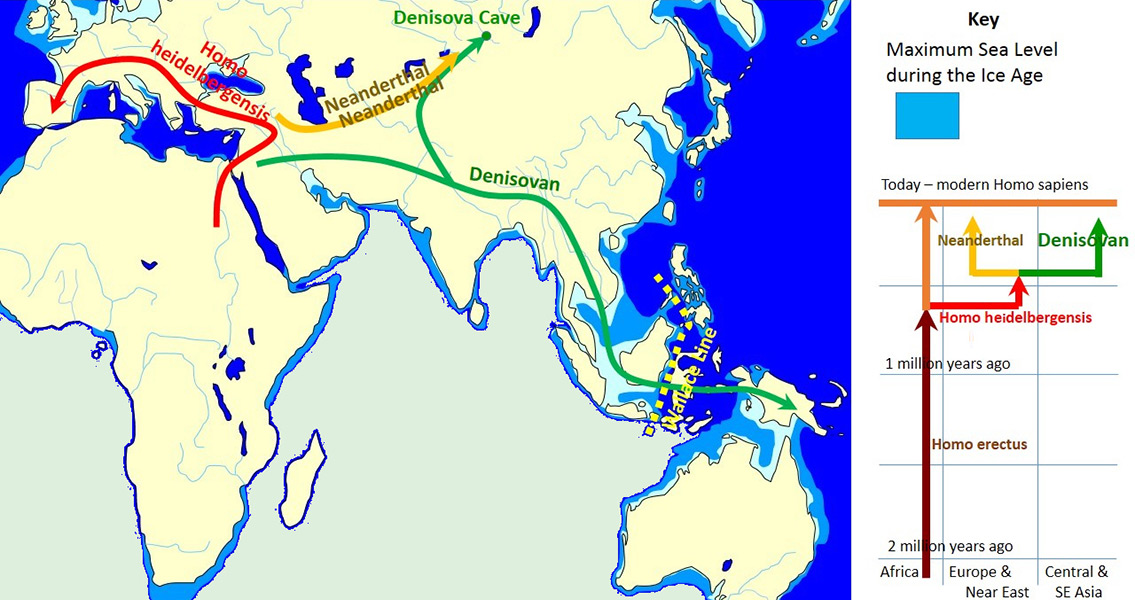<![CDATA[A recent DNA sequencing of Denisovans has determined that the now extinct human species were more genetically diverse than their relatives on the human family tree, the Neanderthals. In addition, the new study published in the journal Proceedings of the National Academy of Sciences has pushed back the dates of the Denisovans' origins and clarified the length of time that they inhabited the area around Siberia. Until now, the human relatives have been shrouded in mystery, with some scientists debating whether Denisovans can actually be considered a separate species. Scientists first discovered evidence of Densiovans' existence in 2008 when a finger bone was unearthed from Denisova cave in Siberia's Altai mountains. Initial DNA sequencing suggested that the Denisovans shared a common origin with Neanderthals, but were as distinct from them as Neanderthals were from humans. Prior to this latest study, only two Denisovan specimens had been described, the finger bone (Denisova 3) which underwent nuclear genome sequencing to identify Denisovans in the first place, and a molar (labelled Denisova 4) from the same site. For the study the team, an international group including scientists from the Max Planck Institute for Evolutionary Anthropology, sequenced the mitochondrial and nuclear DNA on the Denisova 4 molar and another labelled Denisova 8 which had been unearthed from the same cave. The team's work has extended the number of known Denisovans to three. The DNA from Denisova 8 accumulated fewer mutations than the Denisova 3 and 4 samples, which would mean it came from an individual in the range of 60,000 years older than the other two. The initial Denisovan discovery was determined to have lived 50,000 years ago. According to the study, the finding suggests "Denisovans were present in the region over several millennia." This in turn gives the impression that they were particularly hardy, capable of surviving in the extremely harsh conditions of Siberia. However, with so few remains to study, scientists can only speculate as to what the mysterious creatures were really like. Physically, the Denisovan teeth are distinct from those of modern humans and Neanderthals. They are significantly larger and lack certain traits, such as some raised points on the crowns of molars, that are found in both modern humans and Neanderthals. In terms of diversity, even though the Denisovan remains were all found in a single cave they exhibited almost as much as found in modern humans. Dr. Bence Viola, a co-author of the study from the University of Toronto, explained the diversity in an interview with the New York Times. "You actually see more diversity in the Denisovans than you’ve seen in Neanderthals from Spain to the Altais, and that, I think, is pretty astonishing," Dr. Viola went on to speculate that whereas Neanderthals started to inbreed after ice age glaciers forced them into isolated regions of southern Europe, the Denisovans were able to move freely through regions of Asia which had not been buried under ice. It has previously been established that Denisovan DNA is present in that of modern humans, with chunks of it found in the DNA of Polynesians, New Guineans and Australian aborigines. It could even explain the development of certain human characteristics. One of the co-authors, Svante Pääbo, told Livescience "In Tibet, an adaptation to live at high altitudes where there is little oxygen in the air has been shown to come from Denisovans." The DNA extracted from the Denisova 8 tooth largely bears a close relationship with Neanderthals, although some of it seems only distantly connected to either Neanderthal or human DNA. This has led to suggestions that the Denisovans may have bred with hitherto undiscovered hominin species. ]]>
Denisovans More Genetically Diverse Than Neanderthals
